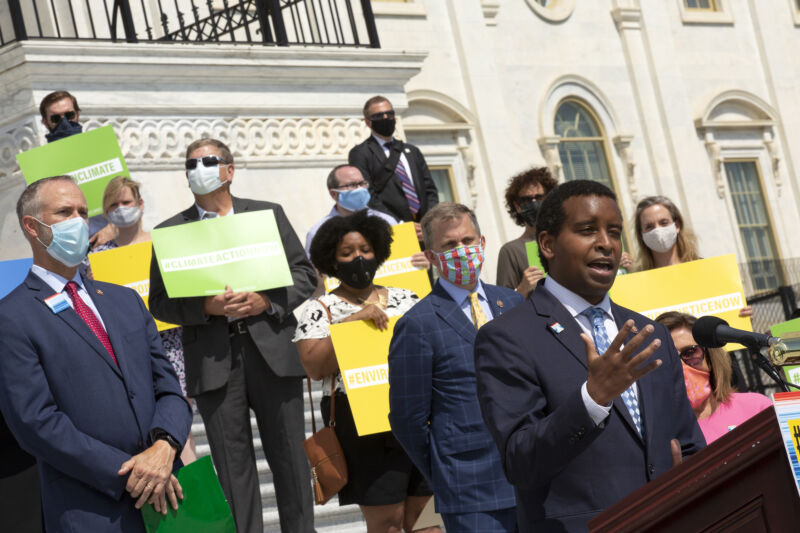Sweeping climate-crisis plan would bring US to zero emissions in 30 years

Enlarge / U.S. Rep. Joe Neguse (D-CO), joined by members of the Select Committee on the Climate Crisis, delivers remarks during a news conference outside the U.S. Capitol on June 30, 2020 in Washington, DC. (credit: Stefani Reynolds | Getty Images)
A House committee tasked with managing the global climate crisis this week unveiled an ambitious, detailed policy-package proposal. It brings the United States to net-zero emissions, protects vulnerable communities, and helps limit global warming to an increase of 1.5 degrees.
The full report (large PDF) from the House Select Committee on the Climate Crisis clocks in around 550 pages and contains suggestions for just about every sector you can think of. Not only does report provide specific policy recommendations and spell what should happen-it also suggests Congressional committees and Cabinet departments to oversee the creation and enforcement of each element.
Broadly speaking, the goals of the plan are to bring the United States to net-zero emissions no later than 2050 and then follow through to negative emissions in the back half of the 21st century. That goal would be achieved by adopting new regulations and incentives in energy, transportation, housing, construction, manufacturing, agriculture, telecommunications, and infrastructure for a start and then building on those accomplishments from there. The report is broad and dense, but here are a few of the highlights.
Read 22 remaining paragraphs | Comments